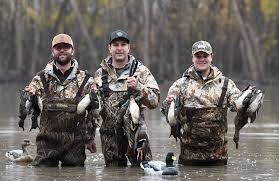Academic veterinary interest in the human-animal bond (HAB) continues to expand and many centers are studying this subject matter. But not all HAB research can be counted as equal.
Studies conducted by the Human Animal Bond Research Institute and Zoetis revealed that relationships with animals have profound effects on people.
Physical
Humans display a natural affinity for animals, evidenced by early cave art showing bovine-type creatures and domestication of them throughout history. This fascination and attraction to living things can be explained through biophilia hypothesis: the belief that people have an innate genetic predisposition towards seeking relationships and attachment with living organisms.
Work or caring for their livestock – whether that be farming, ranching, service dog training or pet care – often leads to close and mutually beneficial relationships between human beings and animals.
Bonds between humans and animals may lead to positive feelings on a social level and greater recognition of animal sentience, but it must be recognized that the same feelings which drive us to love our pet may also make them reluctant to allow euthanasia for humane reasons or follow treatment plans when their animal becomes ill – this poses a unique challenge to veterinarians committed to the One Health principle, which recognizes both human and animal well-being as interlinked entities.
Check this website: https://mypetcaretutor.com
Emotional
Humans crave attachment and possess an inherent fascination for all living beings – this phenomenon has been coined “biophilia”, or the human tendency towards anything associated with nature or animals.
Pets, working animals, service and emotional support animals – many humans develop close bonds with animals they interact with daily, whether pets, working animals, service and emotional support animals or service/emotional support animals. These relationships may help people cope with stress better, increase oxytocin levels and boost self-esteem levels as well as aiding healing after trauma such as the death of a loved one.
Veterinary nurses, like their counterparts in medicine and dentistry, can advance their position within their profession by understanding the science behind human-animal bonds and how best to utilize it to provide better patient care. Learn more about becoming an expert in this area through NAVC’s Human-Animal Bond Certification program; this will equip you to be a resource for both patients and pet owners while becoming an integral member of a veterinary team – click here for more info!
Social
Human-animal bonds can be seen everywhere: working animals like police dogs and bomb-sniffing canines are known for forming strong ties to their handlers; emotional support animals provide comfort, security, and relief during stressful periods; while farmers and ranchers develop relationships with their livestock.
Social bonding is an inherent characteristic of many vertebrate animals that live in groups, with various benefits for protection, alliance formation and direct fitness enhancement. Fish that experience predation risk together have shown preference for groupmates over non-groupmates – similar observations have been seen with mammals and primates.
Cognitive
People and animals can form more than emotional and social bonds; they can also form cognitive connections with each other, which may influence one’s decision-making, including their response to perceived threats from both animal species and people alike.
Human-animal cognitive connections have developed gradually since humans first domesticated animals for domestication and use as companions, recreation companions, or in agricultural production. Florence Nightingale may have pioneered this form of therapeutic interaction by using animals as distractions for anxious patients – something still widely practiced today across hospitals and other clinical environments.
The AVMA Human-Animal Bond Certification offers veterinary professionals a deeper insight into human-animal interactions in veterinary medicine, as well as how best to communicate its importance with clients. Apply now – members receive a 20% discount!



